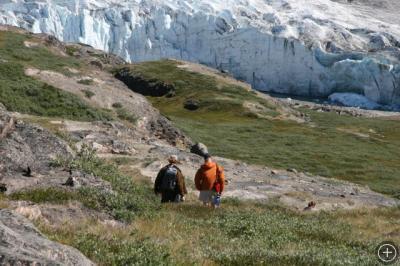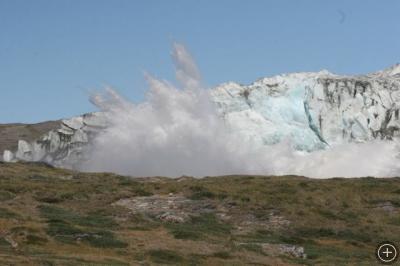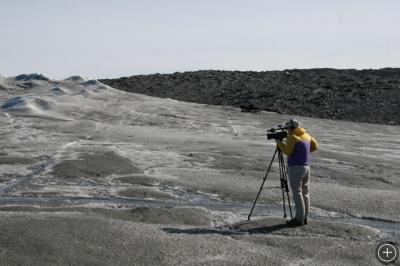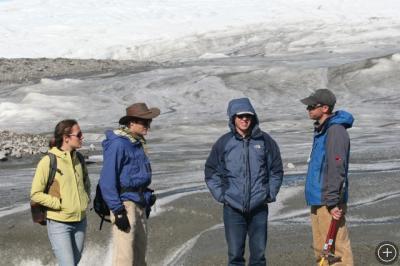Rock Hunting in Greenland
KANGERLUSSUAQ, GREENLAND– Every scientist going into the field has a plan, but things rarely go exactly as planned. Today was a perfect example.
We drove out one of Kanger’s only roads to the edge of the Greenland Ice Sheet with some glaciologists and geologists on a rock-hunting expedition. Tom Neumann and Paul Bierman from the University of Vermont were trying out a brand-new hypothesis: that you could date the last time that the Greenland Ice Sheet disappeared by collecting and analyzing rocks spit out from the base of the glacier. The last time these rocks would have been exposed to the sun’s cosmic rays would have been the last time Greenland was free of ice, a date that is measurable in the lab if you collect the right rocks to analyze.
Therein lays the uncertainty: it’s hard to tell that a rock came from under a glacier unless you can find one sticking out of the ice. Actually getting to the edge of a vast ice sheet to pluck out a rock “in situ” turns out to be a really tough proposition.
First of all, Greenland has been experiencing a very warm spring and summer and there’s tremendous run-off this year, so the glacier front is behind a very fast and wide stream of water. The scientists were hoping to wade across, but that would be too dangerous so they asked the logistics folks here at KISS (Kangerlussuaq International Science Support) if they could use an inflatable raft. After an hour of discussion, that idea was nixed because it, too, would have been a dangerous way to cross a raging water torrent with equipment and people. So we drove out in hopes of finding a glacier face that wasn’t behind an impassable barrier.
The first place we stopped was Russell Glacier about 20 kilometers from Kanger. We hiked up over a ridge to approach the glacier from the backside. While walking on a bluff overlooking the steep wall of ice, I heard a loud boom and turned with my camera in the direction of the noise just as a huge chunk of the ice sheet broke off the glacier. Luckily the camera was on and I caught the splash of ice hitting water topping over the bluff.
We were worried that our science group was down below, especially when one of the guides of a tourist group ran past us over to the edge of the bluff. When we got there, I saw big chunks of ice on the bluff a good 250 feet up the slope from where the calving bounced ice from the water below. Luckily, the rest of our group had gone off in the opposite direction and we joined them back at the truck.
Abandoning Russell Glacier as a likely spot, we drove to the edge of the road where the ice sheet flattens out to meet the land. Donning warm coats, we stepped off terra firma and onto the top of the Greenland Ice Sheet. It was an awesome feeling to be walking on top of world’s second-largest expanse of ice, so I stopped to savor the moment before rushing off to join the glaciologists (I wasn’t letting them out of my site again).
We scouted for rocks on the surface of the ice, a bit dingy from dust blown across its surface, and finally Paul and Tom found some promising prospects. They decided to call it a day and set up camp nearby so they’d be fresh for collecting the next morning. We dropped them off near the ice edge with their gear and a wish of good luck. Lisa and I plan to catch up with them next week to see how they’ve progressed with their plan.
















Nice photos. The crashing splashing ice is dramatic. The boot on the chunk of ice with the sparse and scrappy vegetation is such a nice slice of environment.
Hey thanks,
It was lucky that we were there, I just turned toward the boom of ice crashing and snapped that picture.
Then when we walked up close to where it happened and saw the big chunks of ice on the bluff, we realized what a big event it had been. it can be dangerous if you are too close to one of those calving fronts, but luckily noone was hurt that day.
mary
Indeed! Especially considering what happened just 5 days later not too far away, just the other side of Disko Bay…